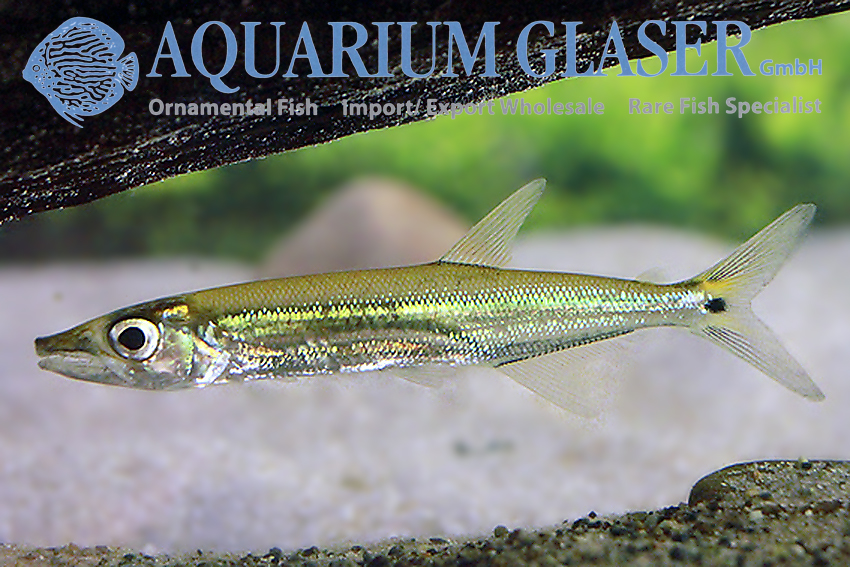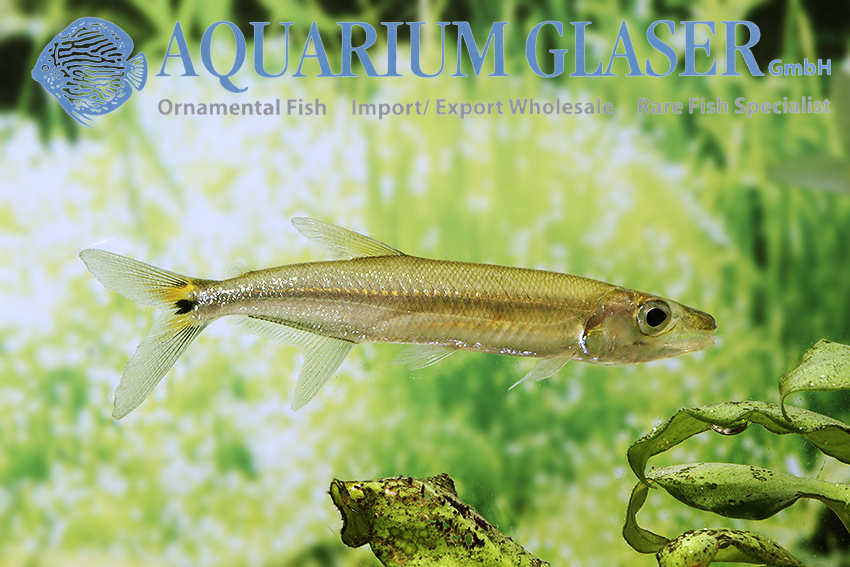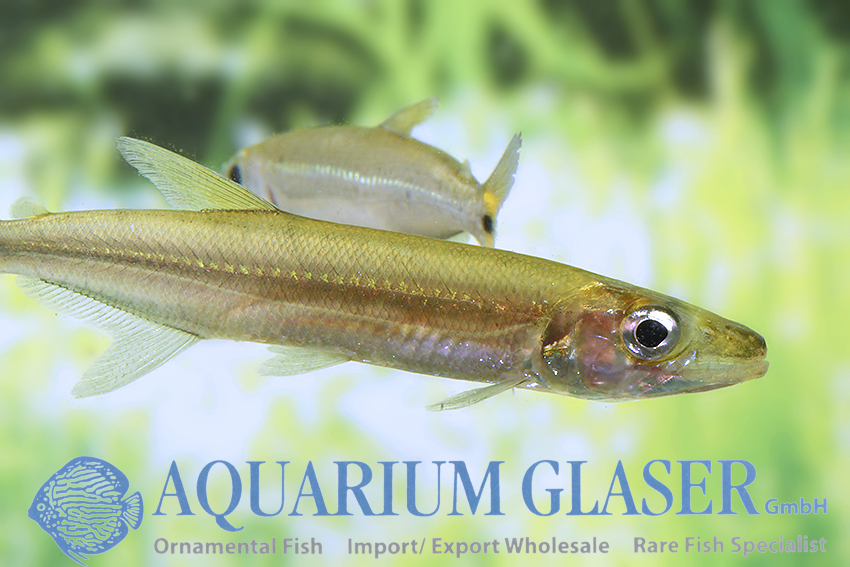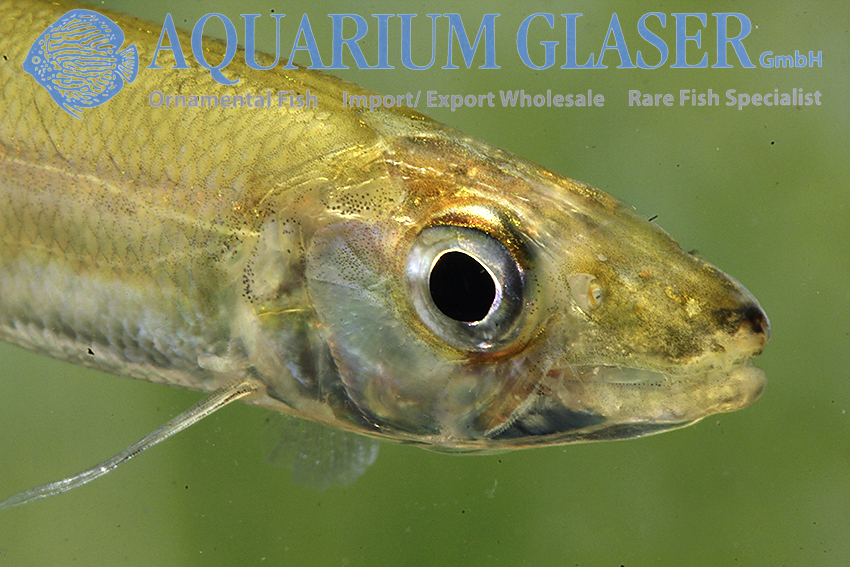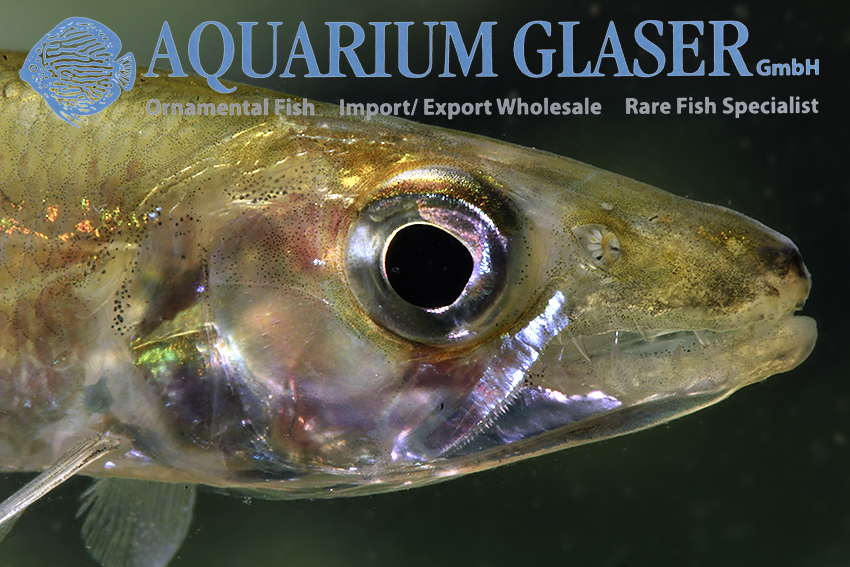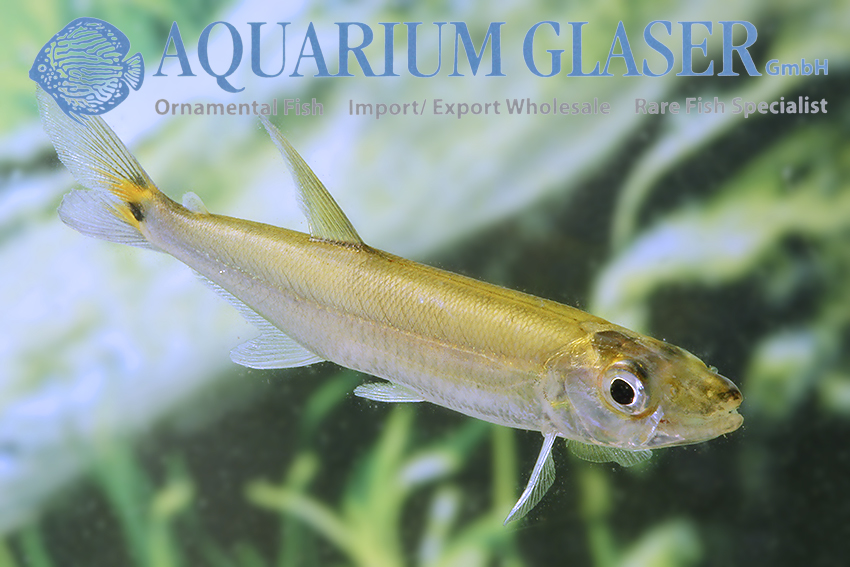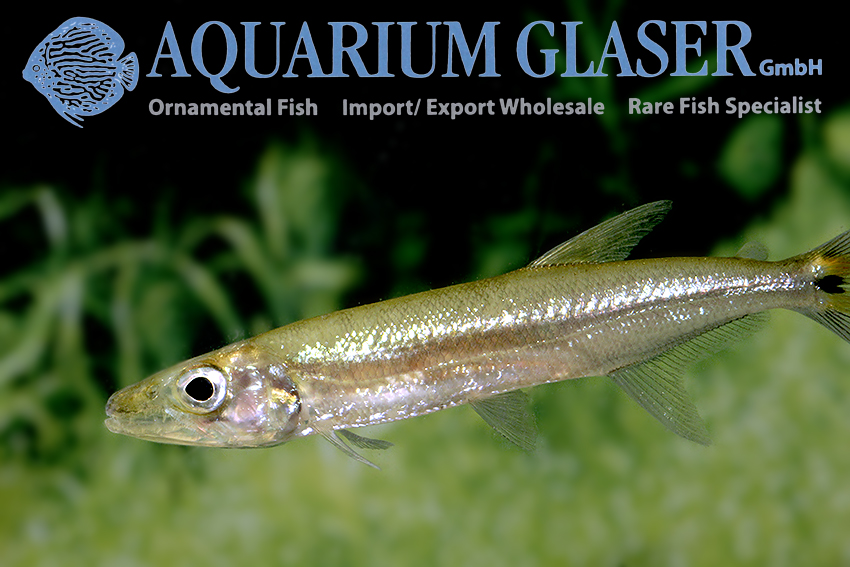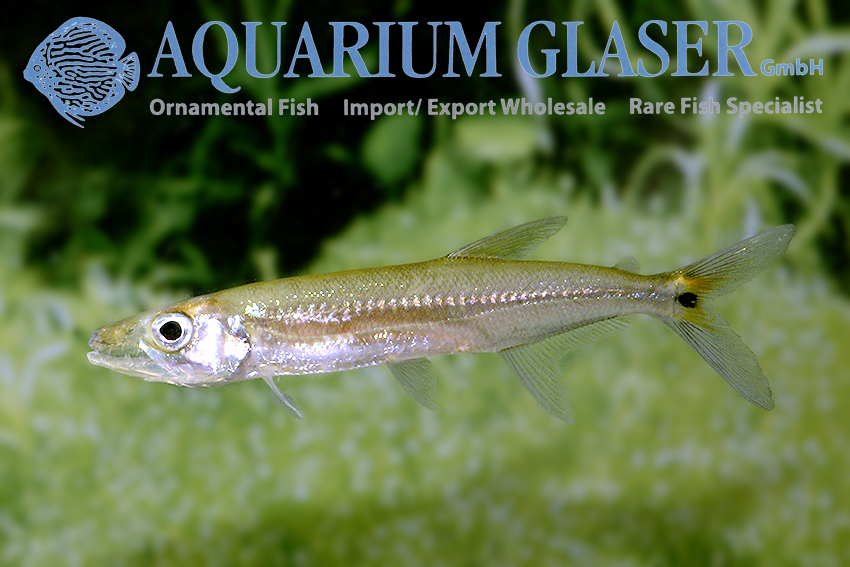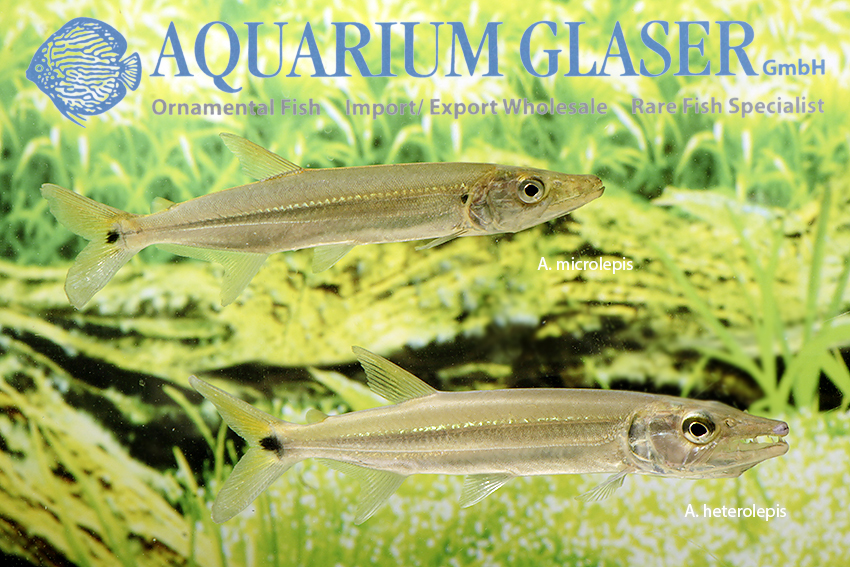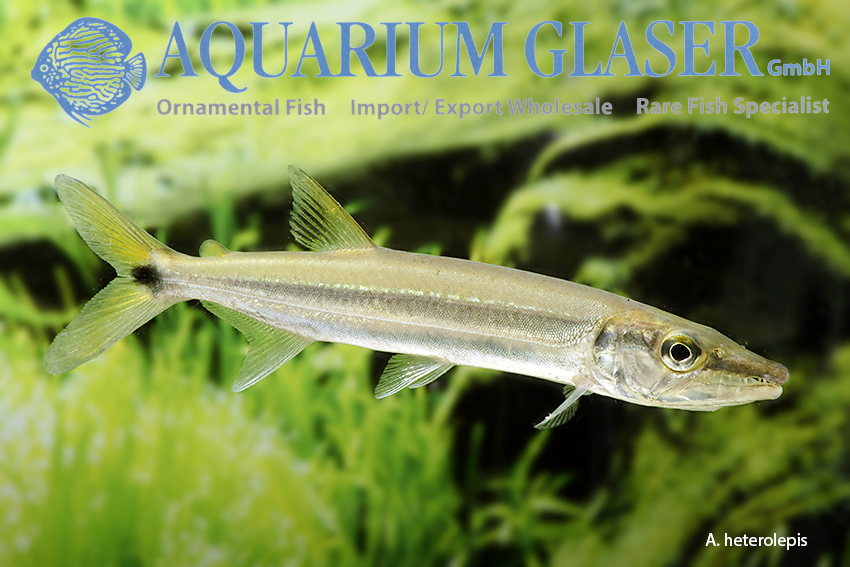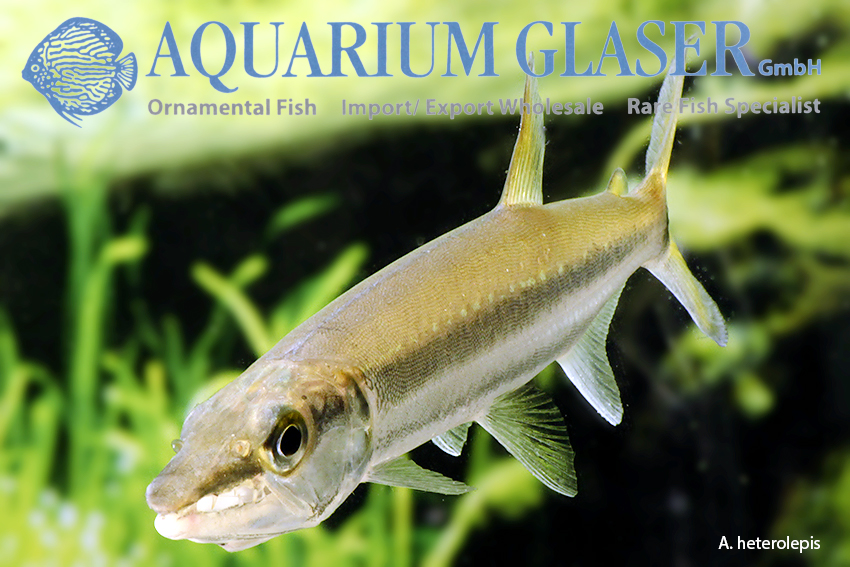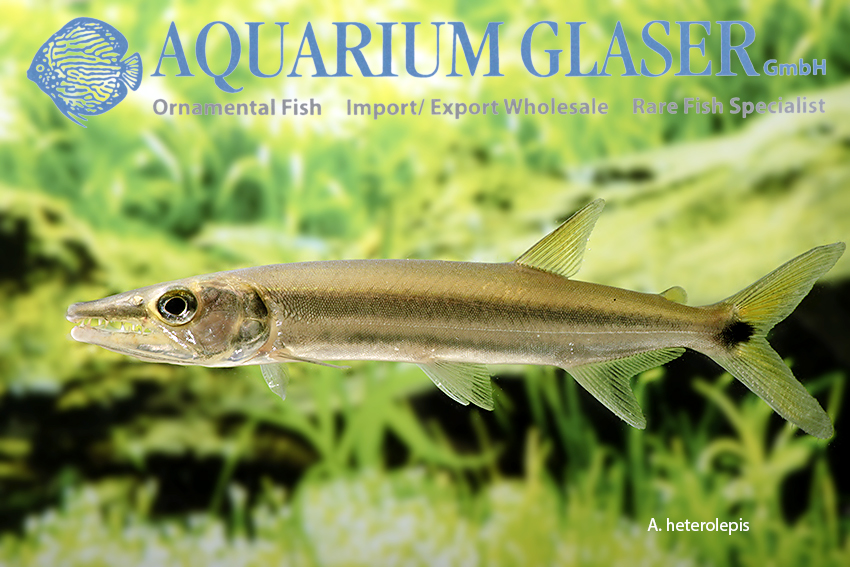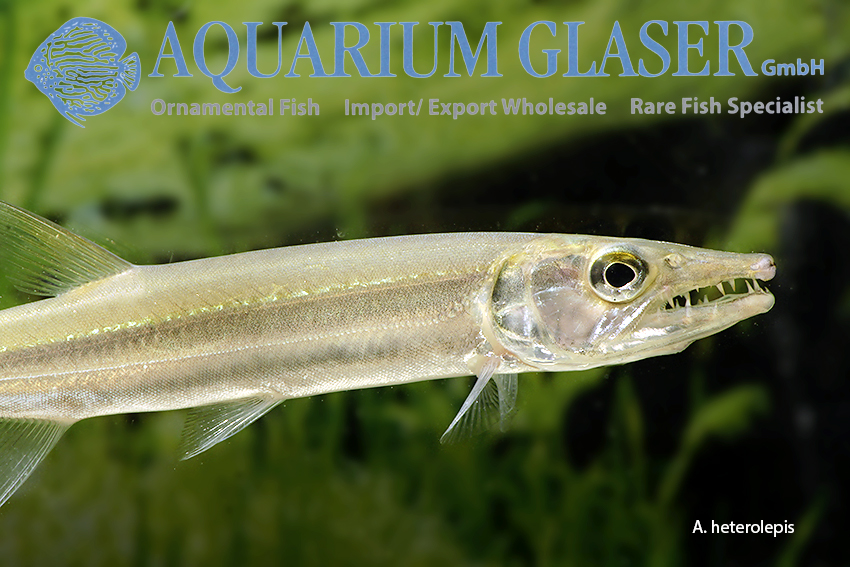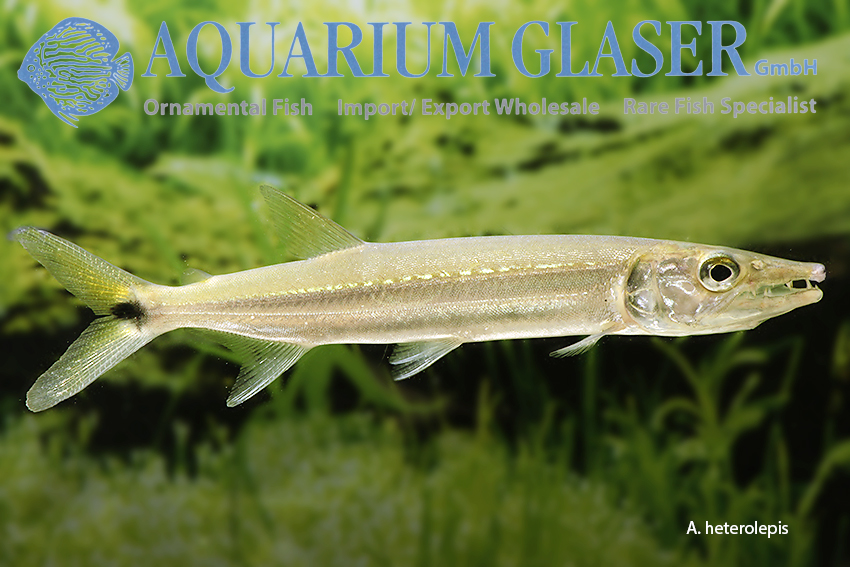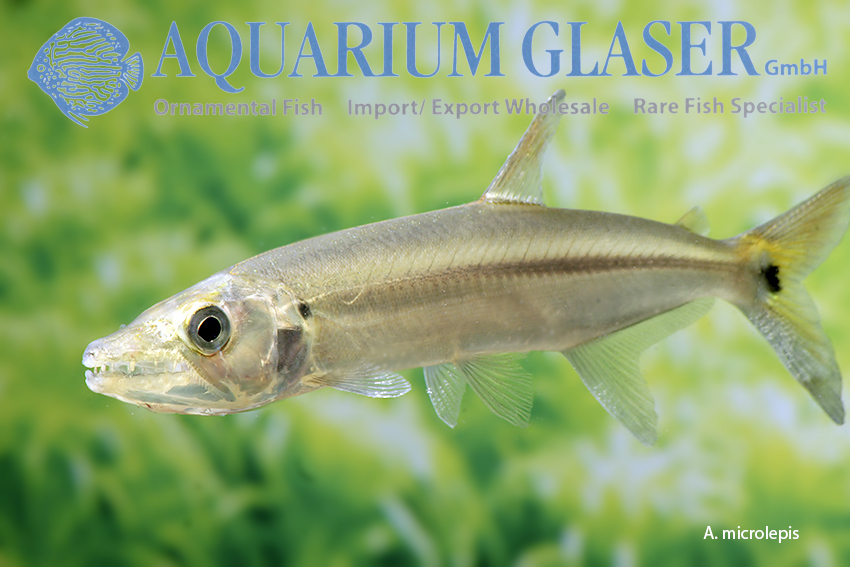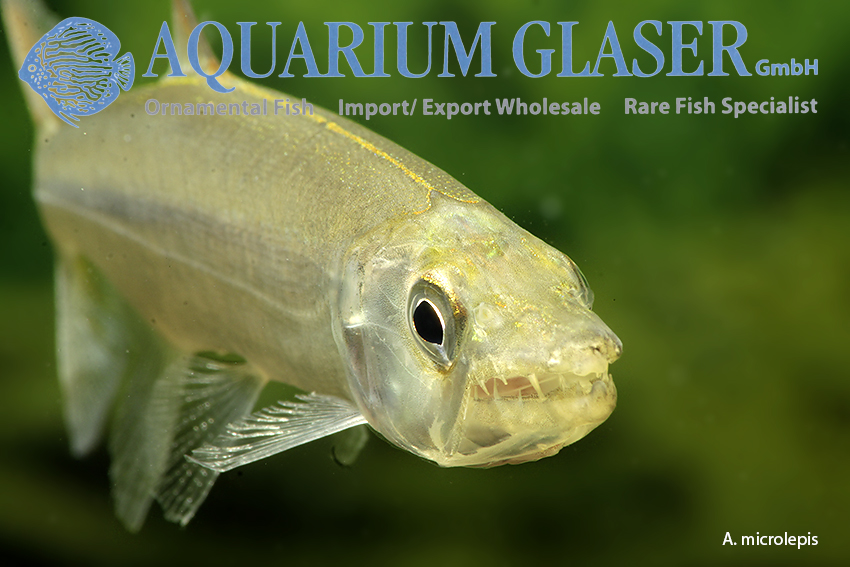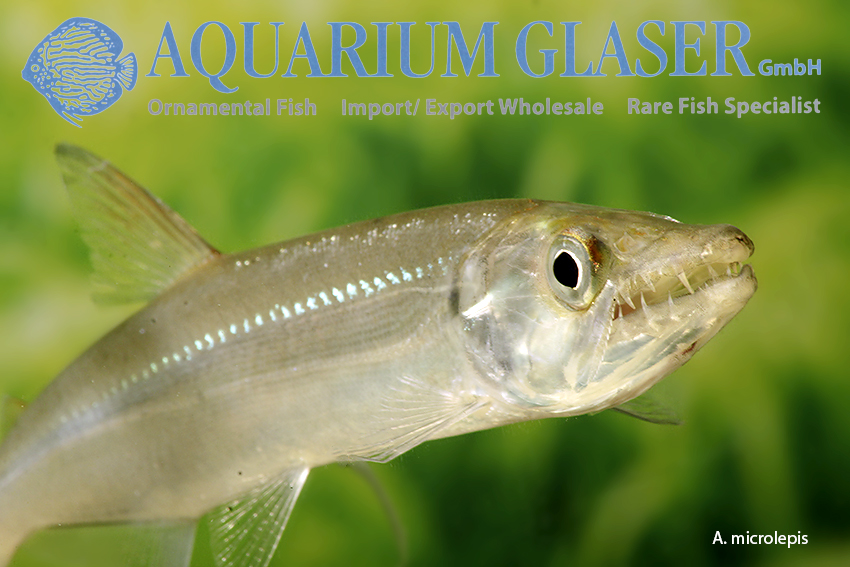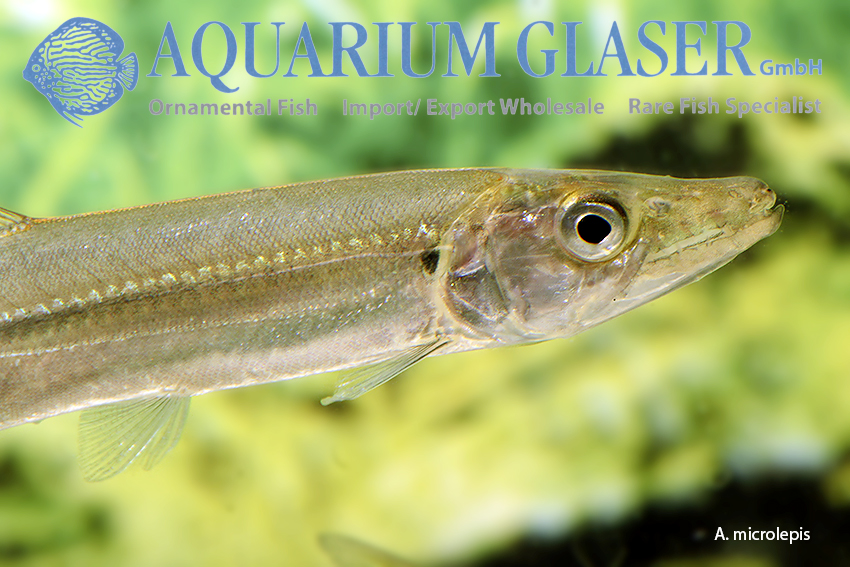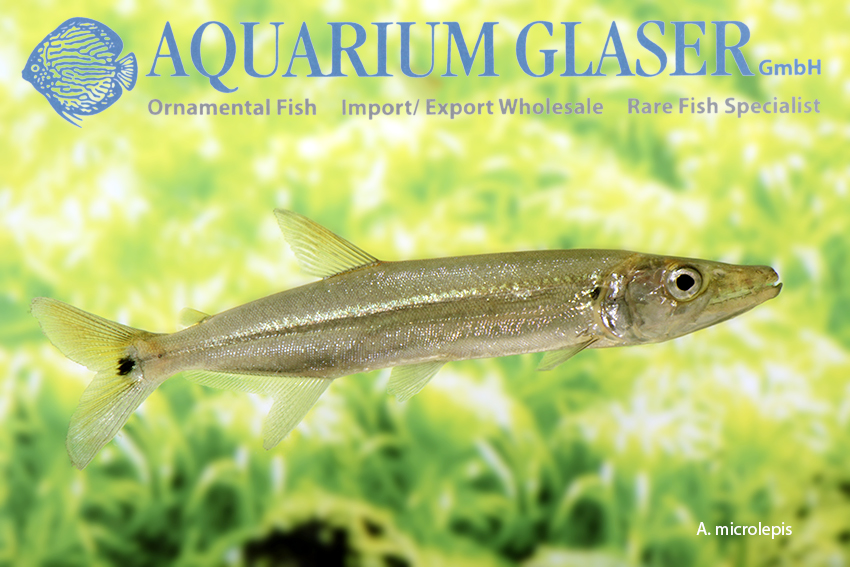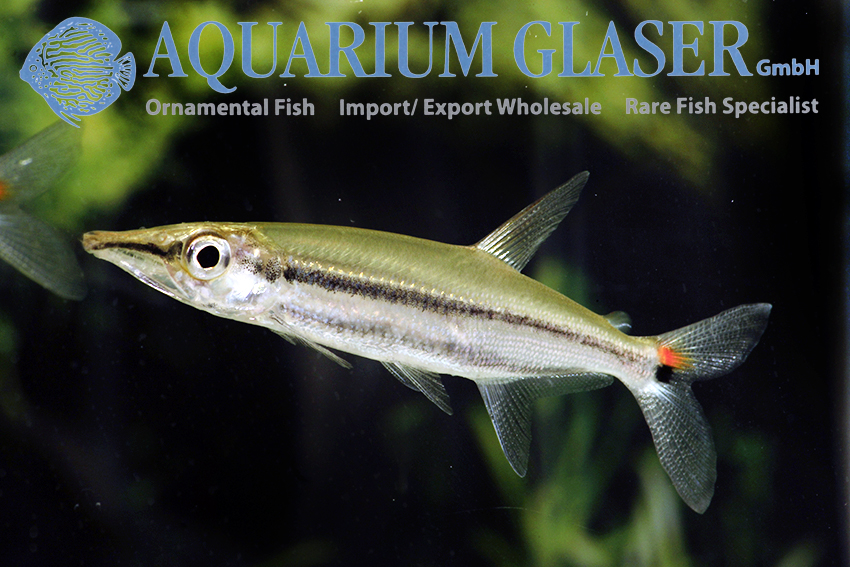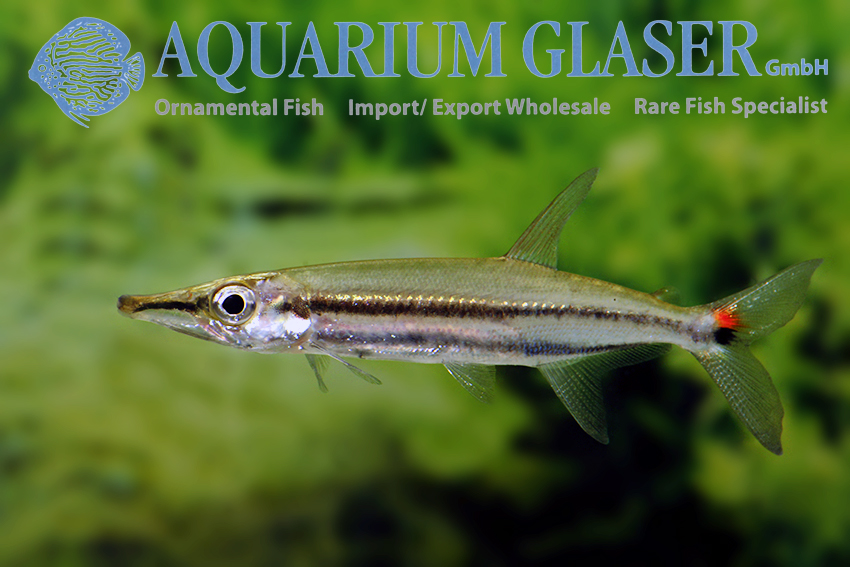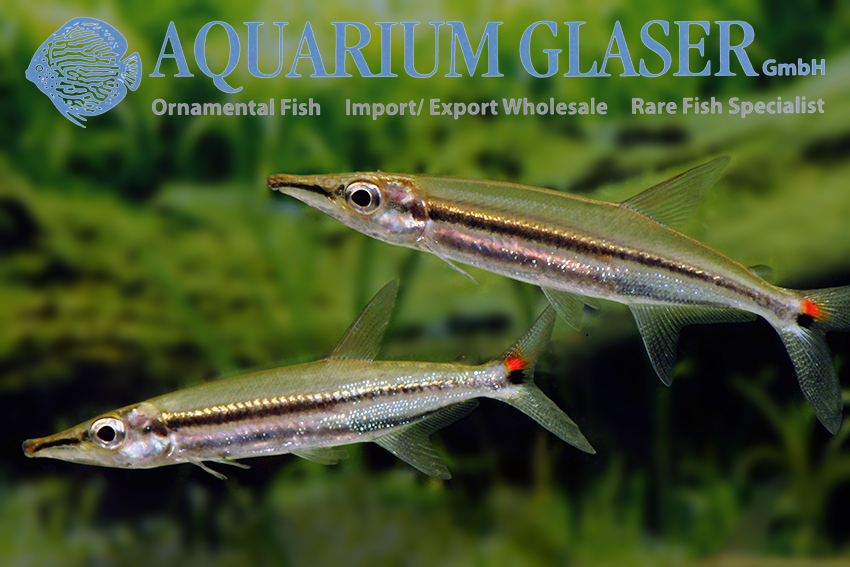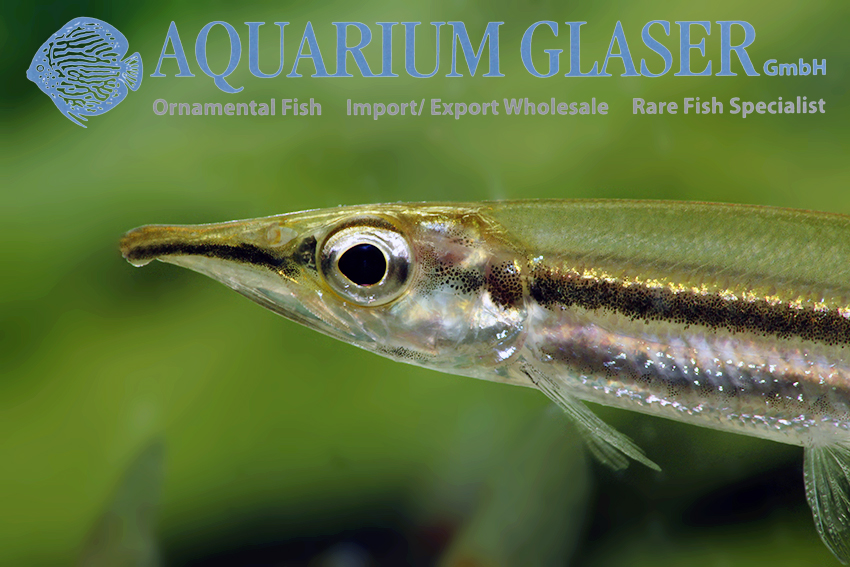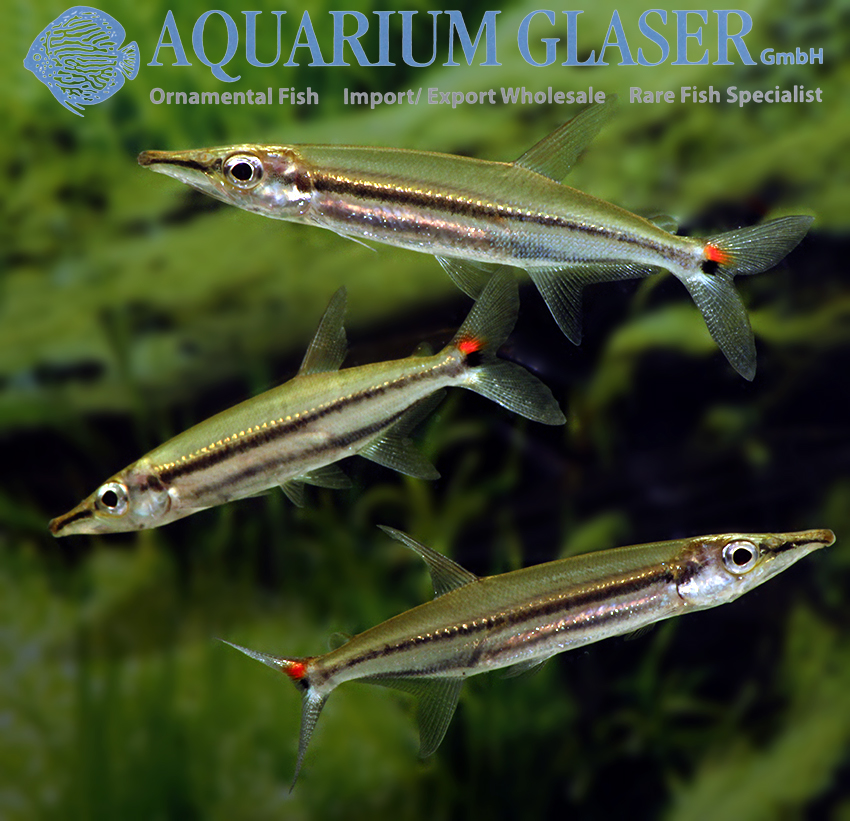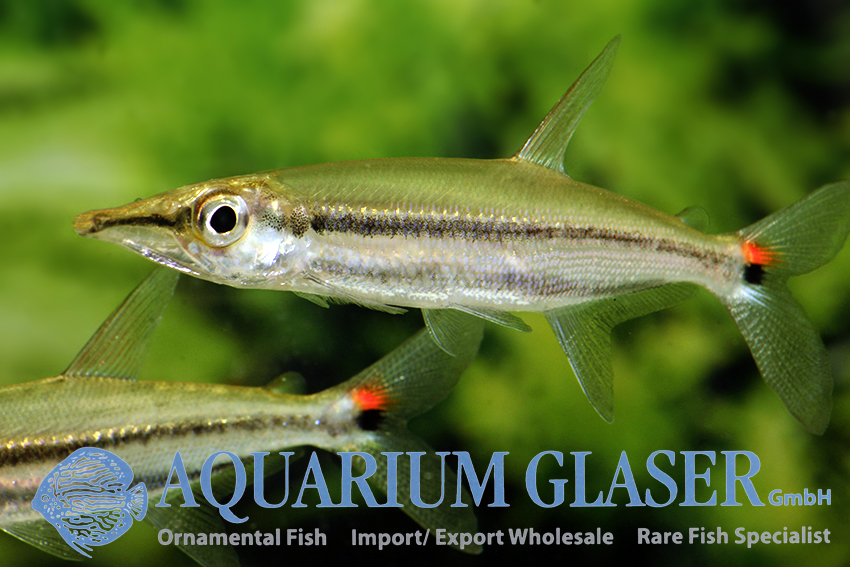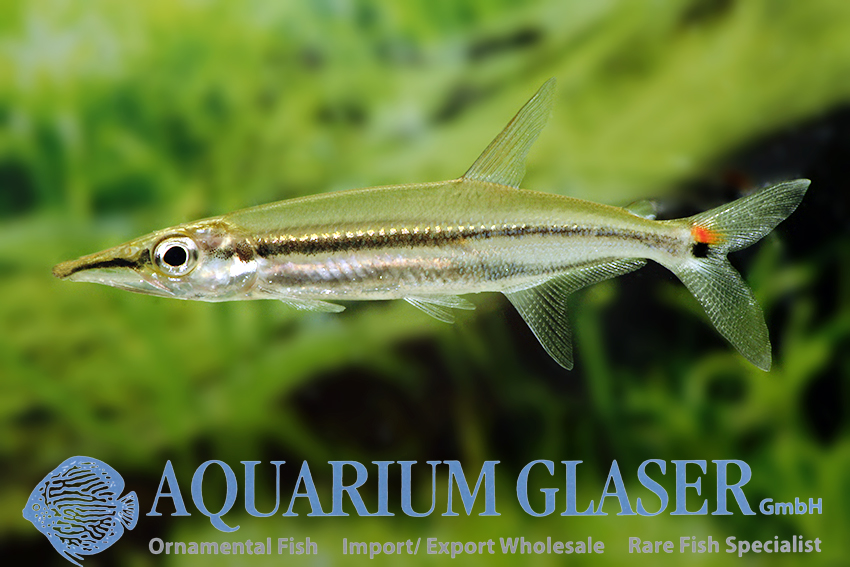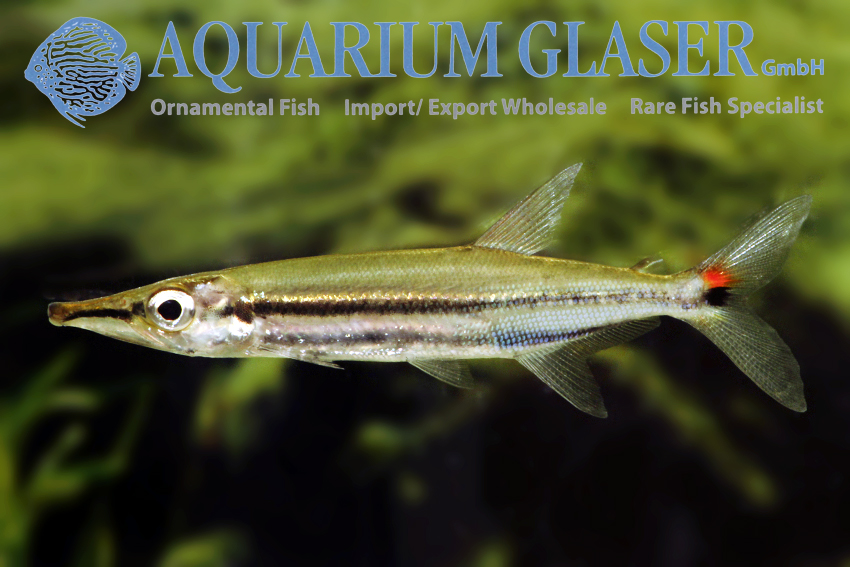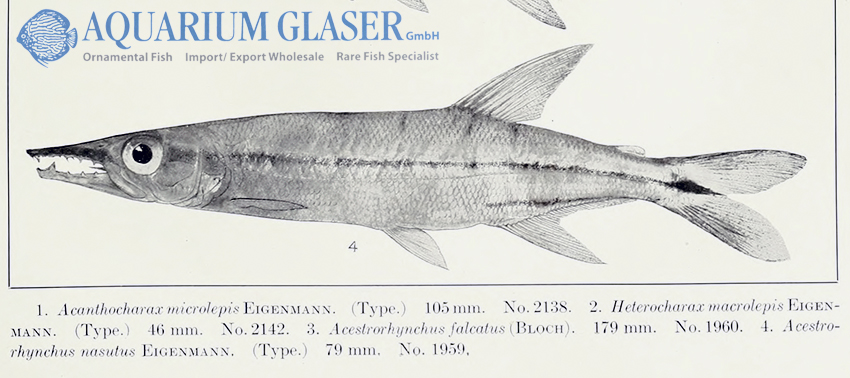Unfortunately, almost all predatory fishes have one unpleasant characteristic: most of them grow too large for average aquarium dimensions. In many cases we can only keep juveniles for some time and have to part with them when it becomes nice. What a pity!
An exception to this rule is Acestrorhynchus minimus, a barracuda tetra from Amazonia. The barracuda tetras are widely distributed in South America with 14 currently recognized species. Most species grow to 20-30 cm in length, so can still be maintained quite well in very large aquariums. However, Acestrorhynchus minimus even grows to only about 8-10 cm in length and can thus still be accommodated excellently in medium-sized aquariums of perhaps 120 cm edge length. Unfortunately the species is imported only very rarely. From scientific collections the fish is known from Brazil, Venezuela and the Brazilian-Colombian border area. Its type locality is the Lago Jacaré at the Rio Trombetas in Brazil. However, the specimens illustrated are from Peru, but all diagnostic characteristics of the species fit. From morphologically similar, large-bodied species, A. minimus can be most reliably distinguished by the fact that A. minimus has only a dark spot on the root of the tail, but not at the end of the gill cover.
For our customers: the fish have code 202254 on our stocklist. Please note that we only supply wholesale.
Text & photos: Frank Schäfer





